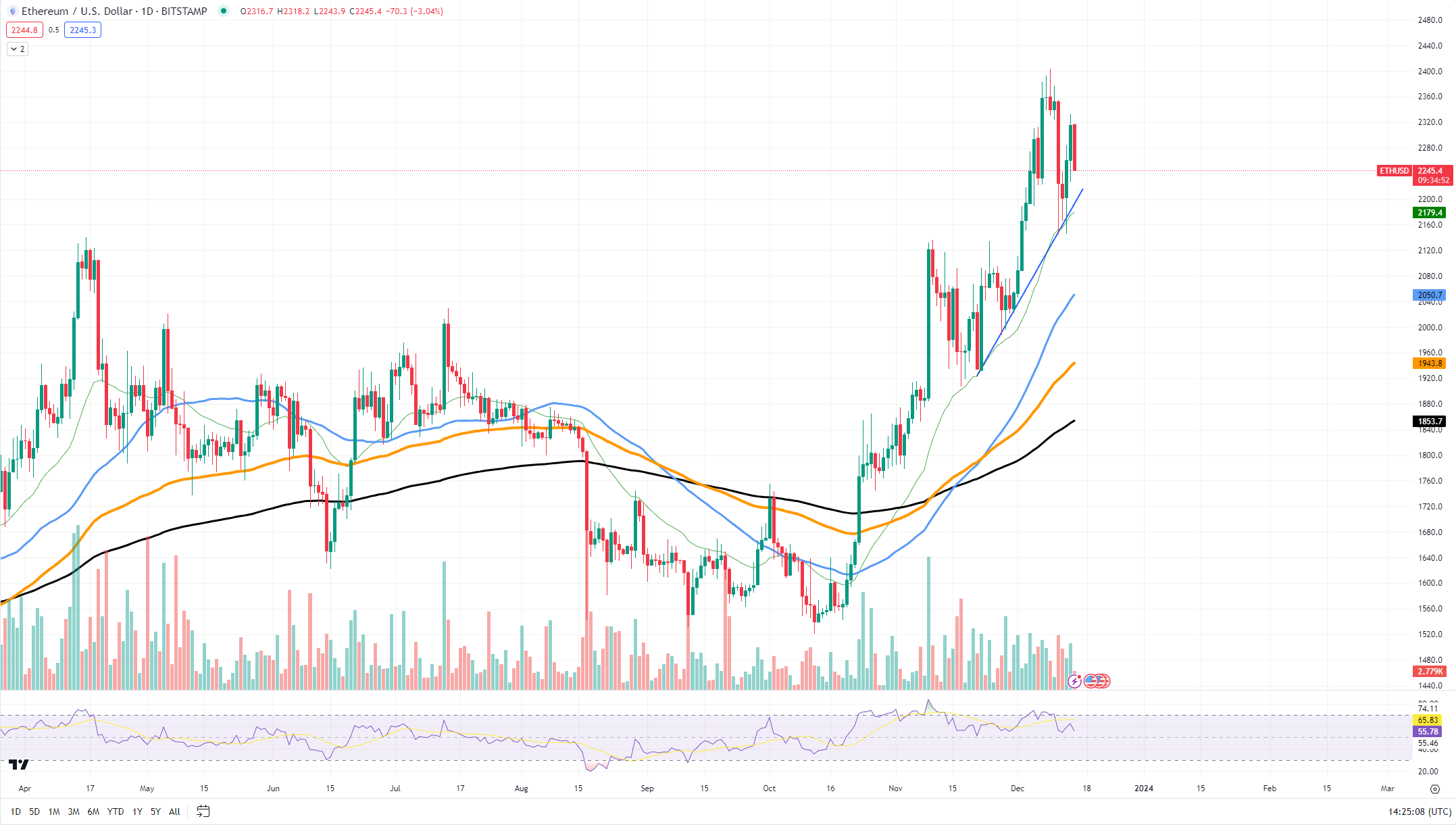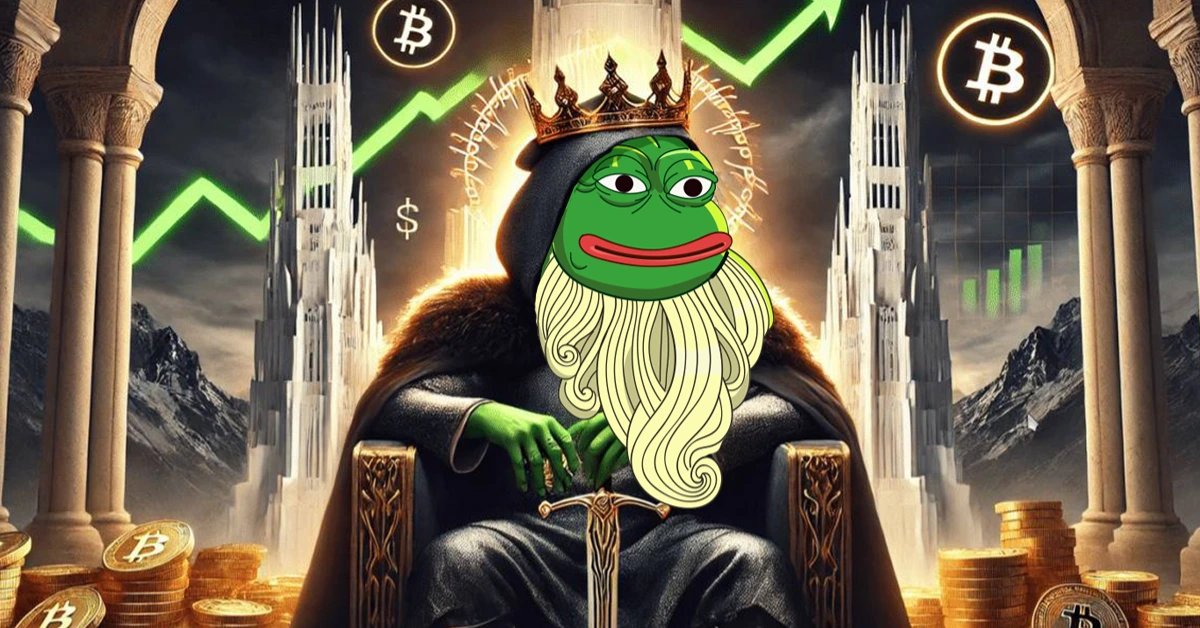The Ethereum market has recently witnessed a tempting approach toward the $2,500 mark. However, this price movement occurs amid a less-than-ideal backdrop for its decentralized finance (DeFi) sector, which is currently struggling and showing no imminent signs of regaining its lost positions.
The underperformance of Ethereum's DeFi sector can be attributed to several factors, one of which is the soaring transaction fees that have rendered the layer-1 platform challenging for average users.
Network fees have escalated to levels that are widely considered unreasonable, severely impacting usability. In response to these persistent issues, Ethereum cofounder Vitalik Buterin has hinted at the integration of zero-knowledge Ethereum Virtual Machine (zkEVM) scaling solutions directly into the mainnet, an advancement eagerly anticipated by the community.
 ETH/USD Chart by TradingView
ETH/USD Chart by TradingView
Amid Ethereum's challenges, competitors like Solana are capturing attention, with its platform maintaining lower fees and higher transaction throughput. This competition has intensified the pressure on Ethereum to enhance its scalability and efficiency to maintain its leading position in the blockchain space.
Ethereum's price action offers a compelling narrative. The chart illustrates a notable uptrend, with the price having recently surged above multiple key moving averages, a bullish indicator for many traders. The convergence of the 50-day moving average above the 100-day and 200-day moving averages could suggest sustained bullish momentum. However, this positive trend is met with caution as the Relative Strength Index (RSI) hints at a market that is neither overbought nor oversold, leaving room for volatility.
The chart also reveals that Ethereum has encountered resistance as it approaches the $2,500 level. This resistance zone is critical, and a convincing breakout above it could signal the start of a new rally. However, with the current strain on Ethereum's DeFi ecosystem and the competitive heat from blockchains like Solana, the potential for a breakthrough to $2,500 is enveloped in uncertainty.
BONK's meteoric meme rise
The meteoric rise of Bonk (BONK) has sent ripples across the crypto industry, with its valuation reaching the billion-dollar mark and positioning it as a serious contender in the meme coin space. The recent listings on Coinbase and Binance, two of the largest cryptocurrency exchanges, have played a pivotal role in propelling BONK to new heights, reminding us of the astonishing ascent of Shiba Inu (SHIB) during the previous year's bull run.
The price chart for BONK displays a sharp upward trajectory, indicating a frenzied accumulation phase that often accompanies a new listing's excitement. Such price action is not uncommon for meme coins, which can capture the imagination of the trading community and lead to explosive short-term gains. The high social media buzz and community backing seem to reinforce the potential of BONK as the next viral sensation.
However, seasoned market observers and analysts caution that the meme coin sector is notorious for its boom-and-bust cycles. As BONK's market cap has eclipsed that of other well-known meme tokens like Dogecoin (DOGE) and PEPE, comparisons to SHIB's rise are inevitable. Yet, there is an air of skepticism about whether BONK can maintain this blistering pace or if it will succumb to the same fate that befalls many high-flying tokens after the initial euphoria fades.
It is also important to stay extremely cautious when interacting with assets like Bonk: meme coins often experience significant corrections after such rapid expansions in price. The historical performance of similar assets suggests that BONK could face a challenging road ahead, especially if broader market sentiment shifts. While the dream of dethroning SHIB as a top meme coin is alive, the path is fraught with the potential for high volatility and sudden market turns.


 DogeHome
DogeHome Coincu
Coincu Coin Edition
Coin Edition Coin_Gabbar
Coin_Gabbar Coincu
Coincu BlockchainReporter
BlockchainReporter CoinPedia News
CoinPedia News






















